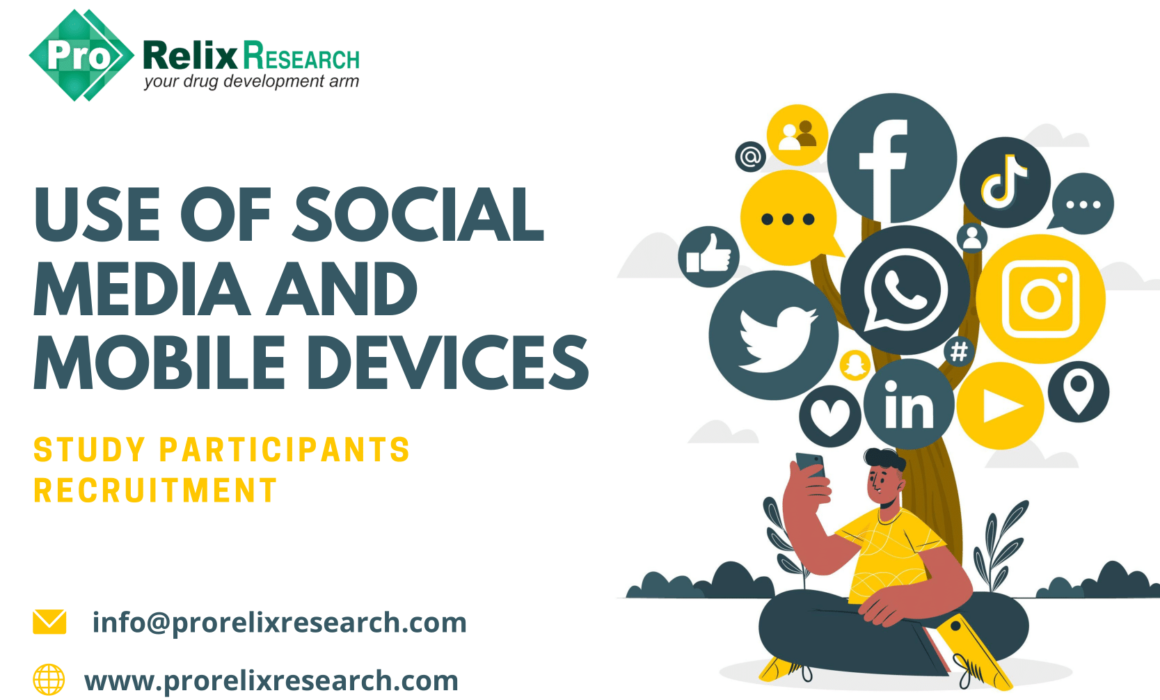Use of Social Media and Mobile Devices – Study Participants Recruitment
There has been a significant change in the clinical trial and advertising industries over the last five years that have altered the face of recruitment, including an increase in the volume of data available and a better ability to identify and target the most qualified potential participants for clinical trials. Learning about these changes and being aware of them when organizing research is critical since they can have a significant impact on clinical trial outcomes.
Participant recruitment continues to be the most difficult challenge for studies, with over two-thirds of research locations failing to achieve enrollment standards.
Over the last five years, there has been a significant shift in clinical trial recruiting around the world. To ensure success, the method participants are recruited will need to keep up with the rise of digital media and personalization of marketing messages.
In General – Decline of Traditional Media
During the last five years, traditional advertising channels have been rapidly supplanted by their digital counterparts. Many people now read news on platforms like Reddit, Facebook, and Twitter instead of newspapers, while traditional television has been challenged by Youtube, Netflix, and other streaming services.
Because of shrinking audience sizes and reach, traditional advertising tactics such as television, radio, mass mailings, and other print sources are no longer as effective as they once were. Marketers have responded by cutting traditional ad spending year over year, and these patterns are projected to continue beyond 2022.
While traditional advertising approaches are more recognizable and certainly what study sites prefer, the outcomes are no longer constant or predictable. Digital media is a terrific method to get the most out of a study’s recruitment budget and stay competitive.
Audiences may get on-demand, personalized services via mobile devices at any time and from any location, thanks to digital media. This move gives advertisers a distinct edge over traditional large-scale advertising efforts, which required messaging to appeal to a broad range of audiences.
Continued Rise of Mobile Device Use
On average, people spend 6.5 hours each day on their mobile devices, with 35% of that time spent scrolling around social media. Between Q1 2020 and Q2 2021, global mobile data traffic surged by 82 percent. In today’s world, little little is created just for desktop users, and the mobile experience is prioritized.
Landing pages, digital adverts, screening tools, and sign-up forms must all be simple to use and strategically created to maximizethe user’s mobile device experience.
A range of tech-based solutions have been introduced to help participants stay involved and enrolled in clinical trials, as well as other modifications. Study staff may now manage and monitor protocol adherence and even forecast when a participant may be at risk of dropping out of a trial using data acquired before and during the study from surveys, enrollment data, and wearable technologies.
Many research sponsors have expanded the number of competitive enrollment studies they conduct in order to enhance participant recruitment. A competitive enrollment study incentivizes study sites to enrollas many participants as possible and earn additional financial reward, whereas a quota study incentivizes study sites to recruit as many people as possible and receive additional financial pay. As a result, several sites are increasingly funding their own advertising campaigns in an effort to boost the number of research participants who are qualified.
During the last five years, innovations in the clinical trial and advertising industries have had a substantial impact on how volunteers are recruited. Increased precision in both the medicines under examination and the volunteers required for a successful trial is now the norm, thanks to a focus on leveraging data to drive outcomes. The use of mobile technology, the rise in popularity of video, and the continued growth of social media usage are all projected to continue.
This means that a clinical trial advertisement will be seen by the correct people more often than if it were advertised through traditional ways, making it more cost-effective and boosting the return on investment.





